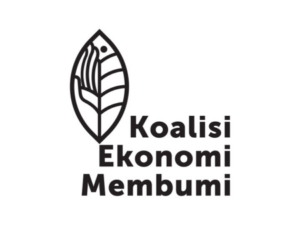
Interview with Gita Syahrani & Fito Rahdianto (Koalisi Ekonomi Membumi)
Koalisi Ekonomi Membumi (KEM) is a coalition of over 30 organizations working to shift Indonesia away from extractive industries and
Global Methane Hub is building a global network of scientists, experts, activists, policymakers, and philanthropists, all pushing in the same direction toward the single goal of mitigating methane.
Marcelo Mena of Global Methane Hub spoke with Ambika Samarthya-Howard on May 28, 2025. Click here to read the full conversation with insights highlighted.
Ambika Samarthya-Howard: Can you introduce yourself and your organization?
Marcelo Mena: I’m Marcelo Mena, and I’m the CEO of Global Methane Hub.
Ambika Samarthya-Howard: You work across so many different sectors: agriculture, waste, energy, and global engagement. How do you structure your strategy? What’s your approach?
Marcelo Mena: Mitigating methane is the fastest way to reduce temperature in the short term, but it also brings benefits that other agendas don’t because the effects of the action stay where the action happens. Therefore, when you mitigate methane, many times, it means lower environmental impacts, or improved food security or energy security, in that same place.
For example, if we’re reducing methane in the organic waste sector, we’re probably improving the waste management practices. That could mean something as basic as trash won’t be burned, which has local impacts, or maybe it won’t be landfilled, causing bad smells to accumulate near vulnerable communities.
It might also mean improving the food donations or reducing food loss and waste. Around a third of the food that’s produced is either lost in the upstream or downstream, depending on whether it’s a developing or developed country. Upstream, if you have bad cold chains or bad animal health, and you’re losing a lot of your product because of, say, mastitis in animals. Downstream if you’re creating too much waste that’s not being eaten.
Ambika Samarthya-Howard: From that perspective, do you see it as dealing with mitigation while also dealing with adaptation?
Marcelo Mena: Yes. Take rice, for example. Rice is a big contributor to methane on the agricultural side. When you are reducing methane mitigation, you are promoting alternative wetting and drying or aerobic rice, which uses less water, so you’re contributing to adaptation directly.
I’ll give you another example. If you have a cooling system to provide better comfort levels for dairy animals, and you have them in a better animal welfare setting, you will reduce loss from heat stress. An animal that’s in a very high-temperature environment could lose up to 30% of its production. Therefore, that is an adaptation measure that also contributes to less methane.
The third adaptation angle is landfills. Landfills tend to catch on fire when it’s hot because there’s more biogenic activity. Therefore, better waste management practices reduce the risk of landfill fires, which is a risk that happens during heat waves.
Ambika Samarthya-Howard: How do you focus your strategy? Do you choose whatever is top of mind? Do you choose three specific things to work on at a time?
Marcelo Mena: Our work is based on the wins we can deliver this decade to create rapid reduction of emissions. Those three examples reflect the core benefits that we’ve identified from the work. Oil and gas are at the center because that’s the easiest place to start. The second would be landfill capture of methane or organic waste diversion. Finally, there’s the issue of improving existing practices in livestock to reduce emissions.
Since we’re in the middle of launching a new initiative called the Rice Accelerator to make breakthroughs on reducing methane in rice production with adaptation co-benefits, this issue has come to the forefront. Usually, we look at rice from the perspective of yield per hectare, but if you don’t have water, that’s not a metric that applies. We should be looking at the yield per cubic meter of water available. Therefore, we’re reframing the way we discuss these issues and trying to look at the co-benefits from mitigation and adaptation coming together.
Ambika Samarthya-Howard: Are these things that you’ve found across the world, or are they specific to climate and water? How can you go so deep and be so clear about these livestock needs and landfill needs when your populations and your geographies are so different?
Marcelo Mena: These are common issues. Landfill fires are common.
Ambika Samarthya-Howard: No matter where you are?
Marcelo Mena: It depends. In Europe, you don’t have a lot of landfill fires because you don’t have landfills; instead, you burn, which is not a good solution either. The landfill issue is a developing country issue. If you look at the biggest methane emissions that are non-oil and gas related as point sources, they’re all from Latin American, South Asian, and African landfills, tropical landfills where you have hot temperatures that drive higher emissions.
Our team is pretty comprehensive in our experience in the climate world, including with the adaptations. I helped shape the World Bank’s current climate adaptation strategy. I did the first national adaptation strategy for Chile, and Carolina, who leads our landfill work, did the second one.
Essentially, it’s about finding entry points in the moments that we have. We’re opportunistic. When we go to India, we don’t talk about methane. We talk about improved waste management, and we bring the solution of lessening the risk of landfill fires. That seems to get a lot more traction than the methane mitigation portion of it. It’s a very opportunistic way of understanding the climate world.
Ambika Samarthya-Howard: You’re working on a regional level, a city level, a national level, and then an international level. Often, in the climate world, everybody has different vested interests. What benefits one group oftentimes harms another, so it’s really hard to come to a consensus.
How, then, do you figure out your partnerships? How are you able to simultaneously do work in Chile, in the World Bank, in India, and so on? Do you work through regional offices? What’s your strategic approach?
Marcelo Mena: We have regional leads who identify opportunities on a regional scale, look for different partners, meet with different partners, and seed funding into new partners because today, the climate world is still pretty concentrated in big, global north-based NGOs. However, the sectors we’re talking about aren’t necessarily prone to using global north NGOs.
When you’re talking about waste management in the developing world, you’re talking about communities of waste pickers that have a different relationship with the waste measure. This is different than the nature of waste management in the global north. Waste management is capital-intensive in the global north and human-intensive in the global south. You need to be there and understand what they’re doing.
Ambika Samarthya-Howard: Are you saying that you’re familiar with these communities because you live in Chile?
Marcelo Mena: Yes. Brazil has the same communities, and so does India. This perspective comes from being in the global south. A lot of people in the global north don’t know that 70% of the population in the global south doesn’t have access to clean fuels. They don’t know that many people have to make a fire three times a day, and they don’t know all the issues around collecting the biomass.
The lack of awareness of the environment limits some of our success. We have around three or four teams in Africa, around five or six in Latin America, and a growing team in Asia, so we’re able to see and experience that environment. Only a small subset of our team is located in the US or Europe.
Ambika Samarthya-Howard: What about when you’re going from the regional or community perspective to the international level? How do you go from working with waste pickers to working at the World Bank level?
Marcelo Mena: By always understanding everybody’s incentive. Whenever we bring the problem of methane, we bring the solution, and we bring opportunities for those who want to work with us. If it’s a mayor in a small, developing country, we’re trying to help them solve their waste management crisis. They don’t have landfills, so they want to see solutions like composting or organic waste diversion.
In the case of the World Bank, they have a methane agenda that’s important, but it’s not necessarily linked to the project or the technical capacity that’s required to change the business as usual practices. We started working with the IDB [Inter-American Development Bank]. IDB wanted to work on methane and waste through this initiative called Too Good to Waste, but they didn’t have a roster of technical staff who would be able to promote activities beyond the same old, same old landfill. We linked them to solutions that would be more integral, and that would allow composting, anaerobic digestion, and food waste diversion regulations.
We’ll see cases where someone wants to work on it, but maybe their limitation is that they don’t have the funding to unlock the technical assistance for that. However, they do have a big pot of money they can use for climate finance. What we’ve done in places like the World Bank, or IDB, or IFAD [International Fund for Agricultural Development], is give them funding to hire that staff. With that staff, they could design projects that focus on methane mitigation, and then we could leverage their funding. We put in roughly $15 million for those teams, and they have committed to roughly $15 billion in funding from that catalytic funding that we’ve provided. Then, they will go to the local government or national government for help to carry out a loan to fund the solutions they have coming from the bottom up.
Ambika Samarthya-Howard: Do you consider yourself a regranter, like Avina?
Marcelo Mena: Yes, a regranter, but an NGO at heart. We also handle the diplomacy. We are pretty seasoned negotiators in the climate space. Hayden Montgomery was an ambassador to Argentina and Uruguay, but also a climate negotiator for New Zealand for 20 years. He is doing all our research for agricultural issues because he’d already established this research alliance on agricultural emissions, and now he’s set up a new agriculture alliance for research, both on livestock and rice.
Carolina was a lead technical person for COP [Conference of the Parties] 25, the Chile COP. She led the first net-zero policies for any Latin American country. Now, we can bring that to Brazil, or other places, and we’ve got a varied set of successes that we could point to. Following our lead will give them the success that they also want. That’s why I was able to go to China 10 days ago and have very high-level meetings and seminars with people from the People’s Bank of China, which is their Central Bank or their Ministry of Finance. They know that I have been successful in working in that space, too.
Ambika Samarthya-Howard: In terms of your organization, who are you regranting from? Are you regranting from government funds or from other philanthropies? How long has Global Methane been around?
Marcelo Mena: Global Methane Hub is three years old. We’ve already delivered roughly $290 million in climate finance from the initial tranche that was put together in the context of the Global Methane Pledge at COP 26. We recently replenished with another $300 million through a lot of audacious new funding, including SKOLL. Then finally, we got smaller dollar amounts of aligned and direct funding from governments that have an interest in reducing agricultural methane. We’ve received funding from Ireland, for example, and the company Danone because they want to see breakthroughs in reducing methane emissions in the livestock sector.
Ambika Samarthya-Howard: What do you see as biggest changes in the sector? More specifically, how have your challenges evolved from when you started until now?
Marcelo Mena: Having partners that were great contributors to climate finance, like USAID [United States Agency for International Development] disappearing, and watching our partners in the UN lose funding from the US government, doesn’t help. We’re not in any better shape today than we were before. What hasn’t changed is that the fastest way to reduce temperature is to mitigate methane, and that taking action on methane brings local benefits. We’re doubling down on what we’re doing and finding new partners and leadership for this.
For example, we’re significantly investing in Brazil, where we have a great agenda on landfills. They have had a landfill law for the past two years that causes the irregular landfills to be shut down. The thing is, it’s impossible to meet it because they don’t have anywhere else to put the trash. Therefore, we’ve been engaging with that government to help them develop their organic waste diversion rule, along with promotion and projects like composting and anaerobic digestion.
We’re helping unlock additional funding for emissions offsets from companies like Google and providing those investment-grade emission offsets. This is unimpeachable mitigation in many ways because nobody can doubt that it’s better for us to capture the landfill gas that’s causing problems.
Ambika Samarthya-Howard: What is your affiliation with some of the other Brazilian and Amazon-based organizations?
Marcelo Mena: We’re doing work with Observatório do Clima, which is a network of different groups on climate. We’re funding groups like Imaflora. We’re helping, for example, with better pasture management techniques and using satellite-derived information to show where the pasture is.
Ambika Samarthya-Howard: Are you referring to the MapBiomas project?
Marcelo Mena: This work is associated with MapBiomas, but it is directly related to the Imaflora project. We’re working with Observatório do Clima and the Brazilian government to set up their sectoral plans on methane mitigation. We’re also working directly with the UN Environment [Programme] in helping the Brazilian government establish its implementation plans for methane mitigation and its sectoral plans for climate mitigation.
Finally, we’re working with, again, Imaflora, on the issue of looking into the portfolio of investments that the Development Bank has to assess in terms of how to improve current investments towards more targeted methane mitigation.
Ambika Samarthya-Howard: Is the portfolio of investments that Imaflora is looking into LATAM [Latin American] investments, or is it specifically Brazil-related?
Marcelo Mena: Brazil. It’s looking into the ABC+ program, which is their program for improving agricultural sustainability. ABC+ is like a loan program that the government has of subsidies that aren’t necessarily targeted towards methane mitigation. We’re assessing those programs to be able to recommend better programs that target methane.
The latest thing we’re funding is Uma Gota No Océano, which is a comms-based group working on a campaign that focuses on methane mitigation in Brazil, leading up to COP. They have a list of different Brazilian grantees.
The other one is Instituto Pólis, which is part of the Observatório do Clima. Observatório do Clima is a coalition of NGOs that work on climate. Instituto Pólis is the waste bank one. There, we’re trying to help the COP presidency be able to manage all the organic waste that’s going to be coming in from COP 30 because you’re going to obliterate the waste management system of a small city if you don’t do things right.
Those are all Brazil-based organizations.
Ambika Samarthya-Howard: Can you talk about the work you’re doing in China?
Marcelo Mena: China’s the biggest emitter, but I would also say they’re the most committed, and committed at the highest level. The US and China had a bilateral group of commitments under the Sunnylands Statement in 2023, in which both said that they would develop a methane mitigation plan and would include methane in all non-CO2 pollutants in their NDCs [Nationally Determined Contributions].
Since that happened, both action plans have become available, but about three weeks ago, China’s president reinforced that they will include methane in non-CO2 pollutants in their NDC for the first time. Then they’ve also established many different rules. I’ll just give you three.
First, coal methane is a big issue. Coal methane is an explosive gas that accumulates in mines. China has an emergency management ministry that has been focusing on mine safety, and they’ve started extracting that methane and burning it to prevent explosions. Now, they’ve gone to another stage, and they’re extracting the methane from coal mines using compressors that are powered by that same methane, and they are also using that methane to heat the mine.
Now, they have a rule that they can’t ventilate methane from the mine at concentrations that exceed 8%. They also have an emissions trading scheme to create access to funding for those under that 8% threshold. They have the world’s biggest emission trading scheme at $15 a ton of CO2 equivalent. Therefore, they’ll go from the rule to the MRV [Measurement, Reporting, and Verification] to the emissions trading very quickly. We’ve been working with a coalition of NGOs to help them do that. The ESG [Environmental, Social, and Governance] reporting got political in the US, but not in China.
Ambika Samarthya-Howard: How are you managing to work with both private and public industries?
Marcelo Mena: You couldn’t say that China became woke because they started asking their livestock industry to report on methane emissions, right? It would be a stretch. This is something they want to improve because they know that it’s a benefit. They know that there are a whole bunch of productivity gains from it, and that you could reduce emissions while you improve nutrition. They have those requirements in place today.
They’ve also recently implemented a rule to ban ventilated methane in small landfills because they already had the big ones covered. All of a sudden, China has a methane action plan, a target with NDC, and they’re including it in their five-year plan, which is the most important strategic document they have. The new one is going to be published this year. We’ve been working with our partners to help them establish measures on methane mitigation. It’s been encouraging because every time we go there, we find more and more progress at the highest level.
Ambika Samarthya-Howard: How do you bridge the community work you do with indigenous populations with your policy-level work?
Marcelo Mena: I start with the waste side of things. Some traditional philanthropic efforts are like hammers looking for nails, campaigns to target big bad guys, which has a lot of merit in multiple sectors. When you’re talking about waste, we’re the bad guys. We’re generating the waste, and in some ways, the solution comes from the communities. The approach is to empower the waste picker movement to promote things that will contribute to their dignity. For example, taking organics out of waste is very positive, but how can we make that part of the solution?
In the developing world, waste pickers play a vital role in waste management. For instance, in Brazil, Aline Sousa, who was a waste picker leader, put the presidential band on Lula to represent his commitment towards the communities. We’re working with that community because they’re part of the recycling.
The recycling in Brazil is carried out by waste pickers. They’re the ones who collect the waste. They’re the ones who educate people about separating the waste. Now, they want to be part of the solution for organic waste. They could help at composting facilities. They could do anaerobic digestion. There’s a whole world of waste management that does not exist that they want to be part of.
We’re helping the international waste associations organize themselves to be counterparts to this agenda. That’s one way in which we’re incorporated in them, and it makes sense to them because, of course, they don’t want the waste that they recycle to be all gross and sticky from organic waste that could have been removed in the first place.
All the explosions around waste management have to do with mismanagement. If you go to India, those landfill fires often cause the deaths of waste pickers who were working in the landfill. The practices that we’re promoting benefit the dignity of their work and provide them with more formal opportunities. The waste picker story is a strong one that’s valid in Africa, Latin America, and South Asia.
When I was in Brazil’s Ministry of Environment, the waste pickers were formally part of shaping the recycling solutions that we were building into the recycling law. They said, you can’t leave us out. You’re not going to be able to do recycling without us. We’ve been recycling before it was cool, before there was an ECD [e-waste] requirement.
Regarding rice, we are looking at the adoption of global methane rice production. We have a project in the Tamil Nadu State, which is an increasingly water-scarce state. We’re targeting village clusters, women, and youth to mainstream and adopt these innovations. While it’s great to have a World Bank project or development agency promoting a new practice, it needs to be community-driven. These solutions are only adopted through peer-to-peer conversations.
The feed ration formulation tool that we’re using globally, including in India, is an extensionism-based tool used to gather what farmers are feeding their animals, so we can come back and say, here are some other formulations of food that you could provide that cost less and that will lower methane emissions. We need to ensure the adoption happens fast once these solutions are identified.
Ambika Samarthya-Howard: Going back to your hammer without nails comment, what are some examples of things you think organizations are doing wrong?
Marcelo Mena: Let’s say hammers are like livestock. What would be the traditional solution? Eat less meat. In the global north, absolutely. In the global south, there are nutritional aspects that are not being met. The global south’s future livestock emissions are not the problem. It’s the current habits from the global north.
There is a world in which the population of high meat and dairy consumers will decrease, due to health and environmental reasons, and other populations will increase, and that world could have lower emissions. Therefore, it doesn’t help to pit farmers against climate when they are the biggest climate champions, especially livestock farmers. When we show up with a solution saying, we want to work with you to fix meat and not replace meat, it changes the dialogue completely. Last week, for instance, we visited the Beef Research Center in China, and they received us with a feast of beef. It would’ve been totally different if our Chinese colleagues were complaining, man, it’s so hard to provide vegan catering for the events with the Methane Hub.
There’s a role for everybody, but, essentially, when you’re talking to an agriculture minister whose KPI is the number of cows and how much milk they produce, it doesn’t help to say you should have fewer cows.
Ambika Samarthya-Howard: How do you track your impact or success, beyond just methane reduction? How do you think of success in terms of both working with small groups and in terms of policy?
Marcelo Mena: Our challenge is that we have one pollutant across multiple sectors. Just going through the different things is excruciating. We even talk about oil and gas.
We have three main success evaluations. One is tracking commitments and modeling projected emissions based on those commitments. How many countries have committed to methane targets or action plans? Are we aligned with what is required by the 1.5°C pathway, or not? Are we going to be aligned with the 2030 mitigation that’s required?
Another way we track progress is through funding goals. Currently, only 1% of climate finance is going to methane; that’s nearly half of the problem. In addition, only 1% of philanthropic funding is going to methane. Our commitment is to triple multilateral funding because we have a direct way to influence that. We are trying to go from spending $4 billion of climate finance each year on methane to spending $12 billion of climate finance each year on methane.
Finally, we track our commitment to supporting global south organizations because we need to build a better field of partners. Today, they don’t necessarily exist. When you discuss agricultural methane, you’re usually talking about extension services or development-based philanthropies, not necessarily more traditional NGOs. Instead of having traditional NGOs transform themselves into what they’re not, we’re looking into smaller community groups that could grow to be our partners. One key to success is having a larger portion of our funding going to these smaller communities.
Ambika Samarthya-Howard: Is there anything that you would advise people not to do if they were replicating this work? When I say replicating, I’m not referring only to the methane work, but to working across policy and communities, and working globally.
Marcelo Mena: It took us three years to figure out a way for the traditional climate agenda, meaning CO2-focused on technologies like mitigation, renewable energy deployment, EVs [electric vehicles], etc., to see us as allies, and not as having competing agendas. We’re talking about landfill waste, among other things. When we’re saying, plug those methane leaks, some people believe that’s perpetuating the fossil fuel dependency and creating a bigger economic benefit for the fossil fuel industry. We were saying we need to stop those methane emissions as fast as we can, and everybody has a role. We wouldn’t let oil leaks happen as we phase out fossil fuel use. Why would you let methane leaks happen?
Our next phase is going to show that renewable energy deployment and EVs also prevent methane mitigation. Then those groups will see us as allies and see that this is not a detour from the fossil fuel phase-out conversation. This empowers them because it shows that fossil fuels have a worse effect than we anticipated if we consider the methane emissions they cause.
Ambika Samarthya-Howard: I appreciate the time and insights you’ve shared. Thank you, Marcelo.
Click here to read the full conversation with insights highlighted.
Ambika Samarthya-Howard (she/her) is the Solutions Journalism Network’s Chief Innovation Officer: She leads on innovation and technology, leverages communication platforms for the network strategy and creates cool content. She has an MFA from Columbia’s Film School and has been creating, teaching and writing at the intersection of storytelling and social good for two decades. She has produced content for Current TV, UNICEF, Havas, Praekelt.org, UNICEF, UNFPA, Save the Children, FCDO, Global Integrity and Prism.
* This interview has been edited and condensed.
Read about other social innovators
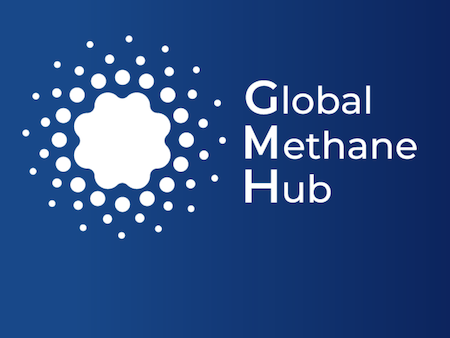

Koalisi Ekonomi Membumi (KEM) is a coalition of over 30 organizations working to shift Indonesia away from extractive industries and
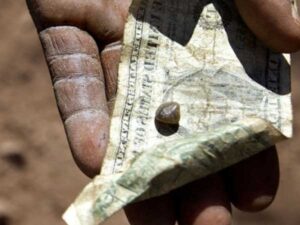
Global Witness investigates, holds governments and businesses accountabile for, and campaigns to prevent natural resource-related conflict, corruption, and related environmental
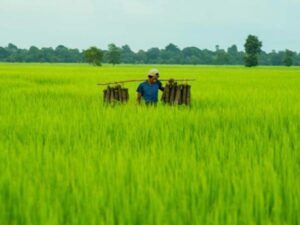
Legal expertise is often expensive and inaccessible to communities around the world experiencing environmental rights violations and other issues. Similar

Creative Capital Foundation supports underserved artists through an open call grant. The organization also provides professional development, educational programs, and
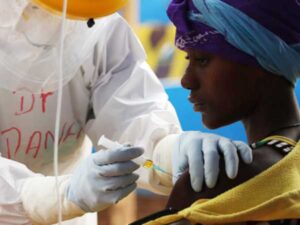
Although Haiti and Montana appear to be vastly different places, they have a few important things in common; they are

Founded in the 1990s, the New Teacher Center offers an education innovation in the form of a promising mentor model
Learn how Indigenous social innovators and their communities are advancing climate action.